Project Description
What is Breast Health?
Breast Health is defined as the maintenance of healthy breast tissue and the avoidance of breast disease.
What are the common, conditions, and diseases associated with Breast tissue?
-
Breast Cancer
-
Fibrocystic breasts
What is the difference between early detection of breast disease and maintaining breast health?
Many woman believe that a yearly mammogram the best way to maintain breast health. Unfortunately, nothing could be farther from the truth. In order to clear up this common misunderstanding we must first establish the difference between early detection of breast disease and the maintenance of breast health.
-
Early detection of breast disease; Primarily uses medical devices such as mammogram, ultrasound, and MRI to screen breast tissue for abnormalities. These devices can also be used to further evaluate suspected breast lesions visualized on previous screening modalities, or those identified upon physical examination of the breast. Diagnosis of breast disease can then be established via tissue biopsy. It is important to remember early detection devices can only help identify existing breast disease, they do not help a woman maintain breast health and avoid breast disease in the first place.
-
Maintenance of breast health; Employs a comprehensive holistic health protocol consisting of numerous strategies that can be implemented on a regular basis to help a woman maintain breast health and avoid breast disease.
What is the benefit of using a Comprehensive Holistic Health Protocol for Breast Health?
By employing the multiple strategies (listed below) involved in a comprehensive holistic health protocol for breast health, a woman will A) have the peace of mind knowing she is taking advantage of the most up to date published peer reviewed scientific research regarding the maintenance of breast health, and B) She can also rest assured that she has done her best to reduce her risk of being diagnosed with breast disease.
(Strategy #1) Are there hormonal imbalances, or deficiencies that can negatively affect Breast Health?
Yes, the primary hormone imbalance negatively affecting breast health is a deficiency of the hormone Progesterone. A progesterone deficiency leads to a condition known as Estrogen Dominance Syndrome (EDS). Estrogen and Progesterone have a balancing effect on each other. Estrogen is excitatory, while Progesterone is calming, Estrogen causes fluid retention, while Progesterone causes fluid loss. These two hormones create hormonal balance in the body by working in opposition to each other, essentially keeping each other in check. When there is a deficiency in Progesterone, Estrogen’s effect on the body and brain goes unchecked, creating a hormonal imbalance where Estrogen becomes the dominant hormone, hence the term Estrogen Dominance Syndrome (EDS). When breast tissue is subjected to the effects of estrogen without the “balancing effect” of progesterone abnormal breast tissue growth and breast disease can occur. Therefore, in order to maintain healthy breasts it is of paramount importance to maintain an appropriate balance between estrogen and progesterone.
How would I know if I have a progesterone deficiency and Estrogen Dominance Syndrome (EDS) ?
Listed below are the symptoms and conditions associated with progesterone deficiency and Estrogen Dominance Syndrome:
-
Pre-Menstrual Syndrome (PMS) – Cramping, bloating, fluid retention, anxiety, and insomnia, in the week leading up to the menstrual period
-
Dysmenorrea – Painful, difficult menstrual periods
-
Pre-Menopause Symptoms –
-
Ovarian Cysts
-
Uterine Fibroids
-
Endometriosis
-
Polycystic Ovarian Syndrome (PCOS)
(Strategy #2) Are there dietary considerations that will either positively or negatively affect support Breast Health?
Yes, there are a number of foods that have been shown in the published peer reviewed scientific literature to support breast health.
(Strategy #3) Are there any nutritional deficiencies that could negatively affect breast health?
Yes, the breasts (like other tissues in the body) are made up of cells. Each cell has very specific nutritional needs to support the structure and function of that cell. Consuming adequate amounts of essential vitamins, minerals, amino acids, and fatty acids are necessary for the structural and functional aspects of cellular health listed below:
-
Cell membranes
-
Cell receptors
-
Mitochondrial membranes
-
Mitochondrial energy production capacity
-
Cellular repair mechanisms
-
Cellular detoxification mechanisms
-
Anti-oxidative mechanisms
-
Enzymatic DNA repair mechanisms
(Strategy #4) Are there any nutritional supplements that will support Breast Health?
Yes, there are numerous nutritional supplements that have been shown in the published peer reviewed scientific literature to support breast health.
What should a Comprehensive Holistic Protocol for Breast Health include?
A Comprehensive Holistic Health Protocol should always be customized to meet the unique needs of each person. Not only do people have different genetic variations, but differ in important lifestyle factors that influence their overall health outcomes. A persons diet, stress levels, professional and family responsibilities, sleep patterns, exercise choices, as well as past and present medical history all must be considered in protocol design. Of the over 11,000 Comprehensive Holistic Health Protocols we have designed in the last 27 years of clinical practice, no two have been exactly the same. The four main components of an appropriately designed Comprehensive Holistic Health Protocol for Female Hormone Imbalances would include:
-
A customized diet; Specific to the patients individual needs
-
A general nutritional supplement strategy; To support basic health needs
-
A targeted nutritional supplement strategy; Specific to the patients individual needs
-
A hormone modulating nutritional supplement strategy; Using Standardized Botanical Extracts (SBE) that can affect the levels of various hormones within the human body.



